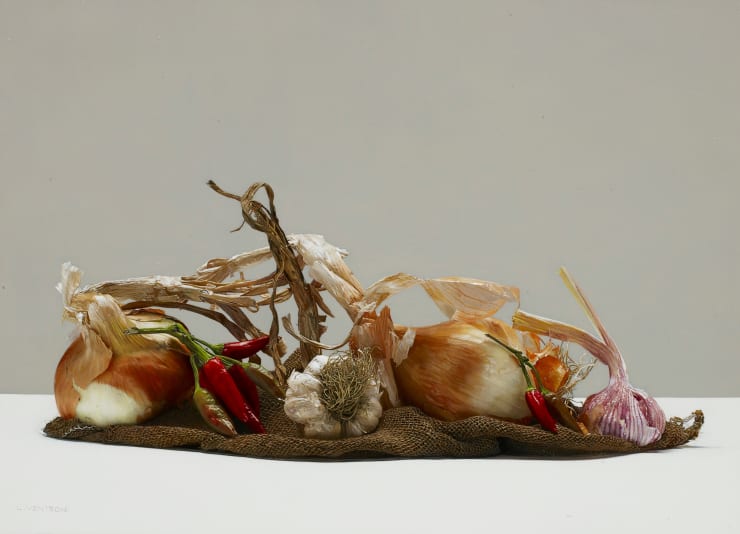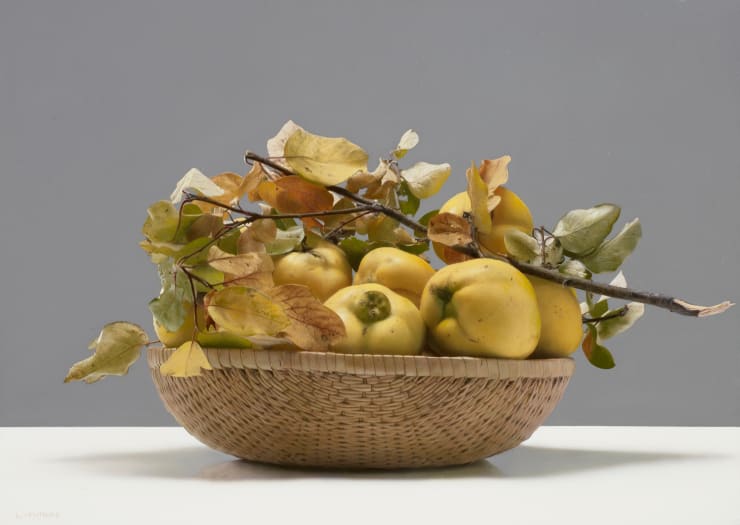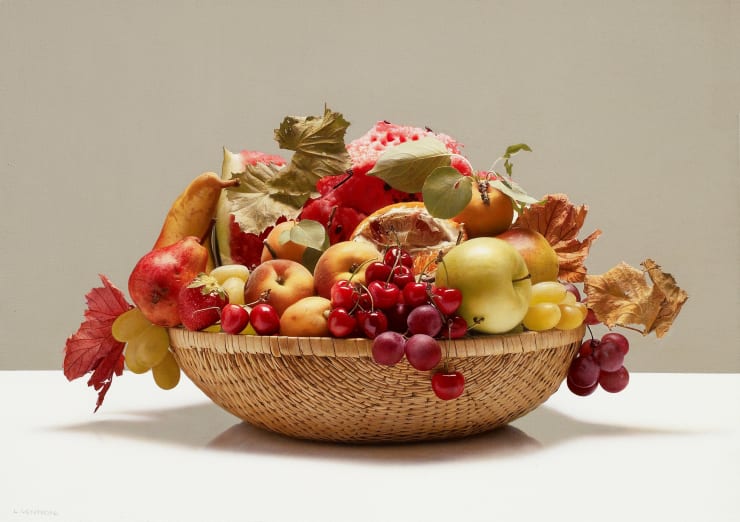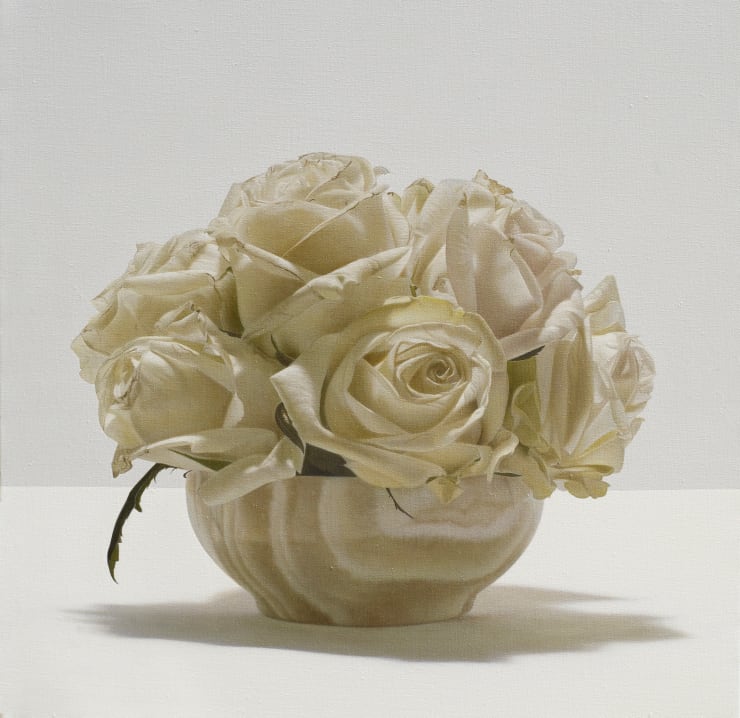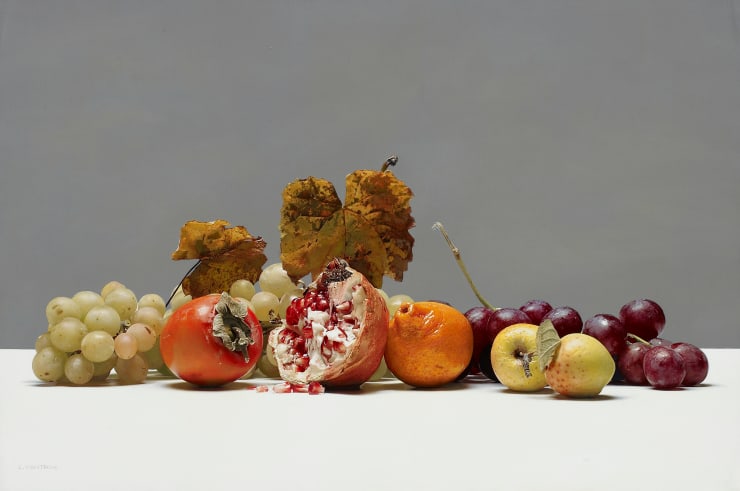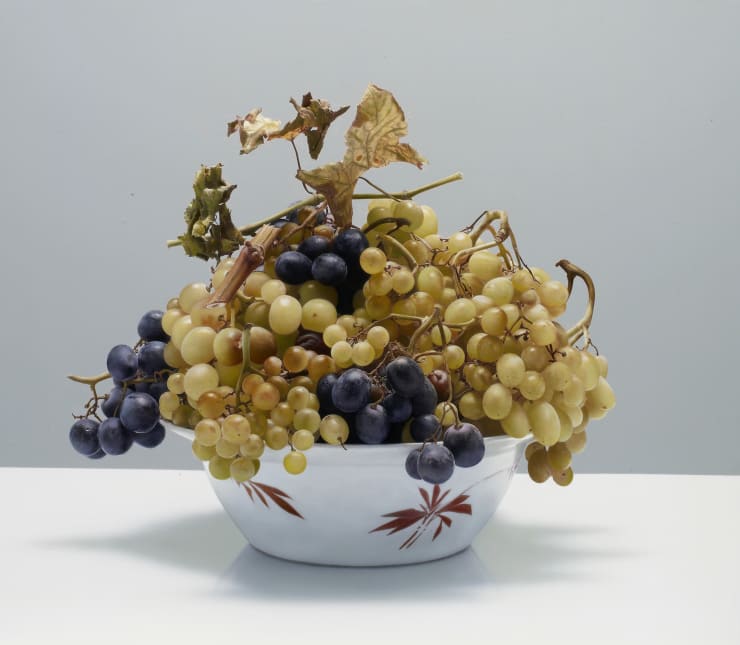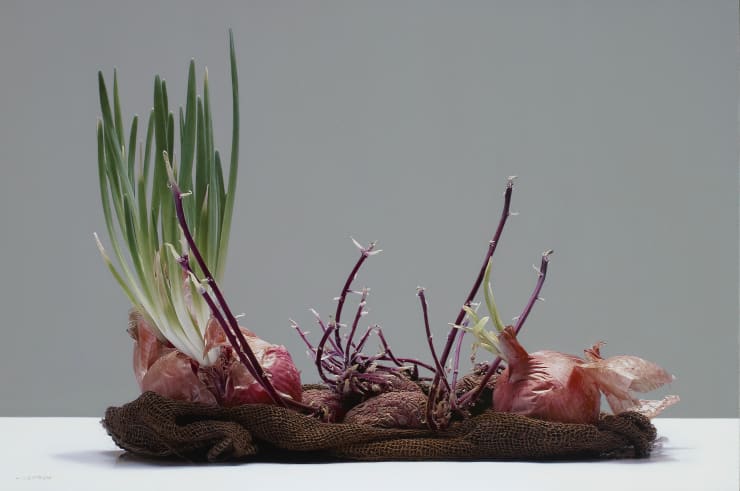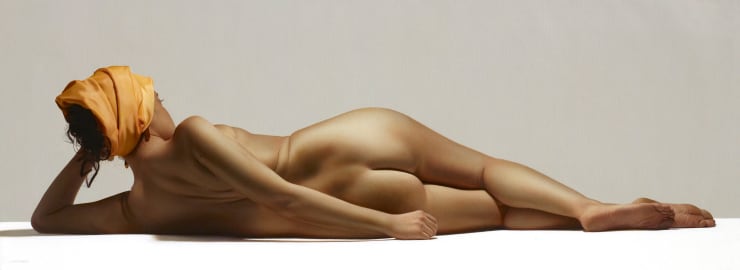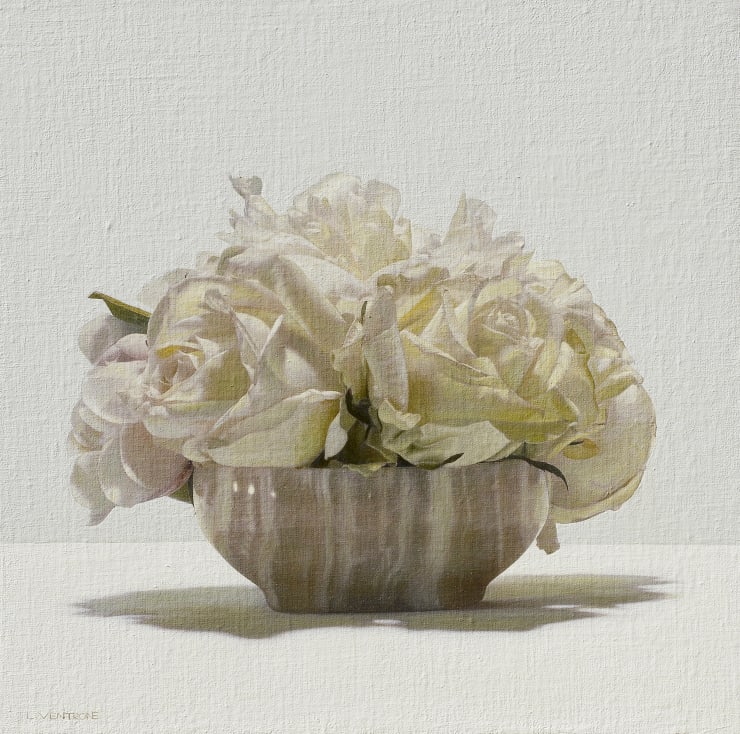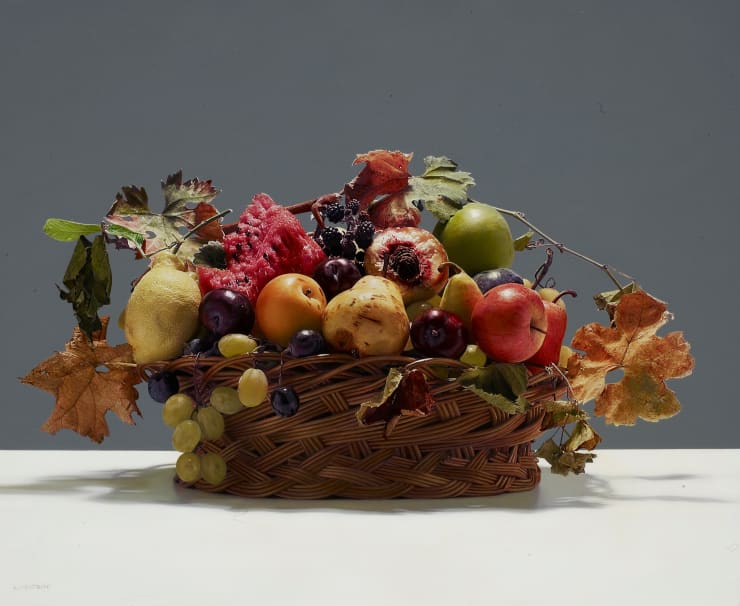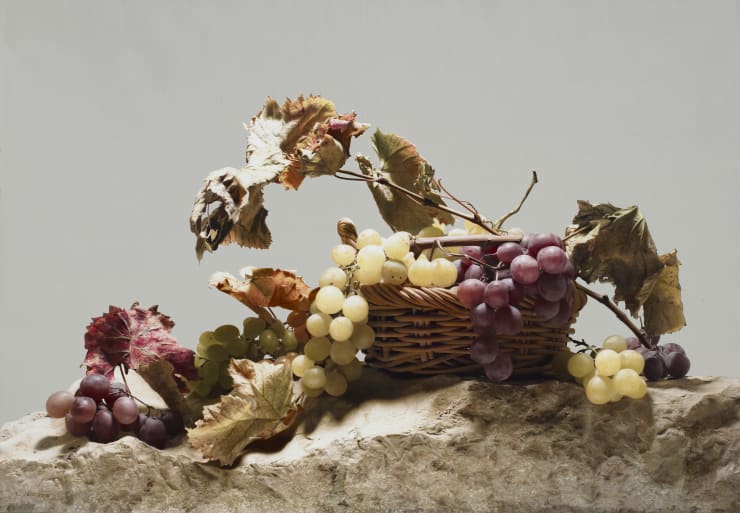Luciano Ventrone: Opera Pittorica
Italian master, Luciano Ventrone, had a long and successful career. His professional activity spanned almost eight decades - he was exhibiting paintings from 1956 until 2021. His legacy is a remarkable body of figurative painting, which articulates and investigates the nature of pictorial representation, its perception and interpretation.
Born in 1942 in Rome into a humble background, he showed an interest in art from a very early age. He later claimed such a vocation to be innate and that his path was set and unwavering from childhood. At eighteen he embarked on his art training at the Liceo Artistico in Rome where he came under the aegis of several distinguished masters of Italian abstract painting. From this point Ventrone launches himself into a series of programmatic and thoughtful explorations of modes of painting. Like all young artists Ventrone experiments with differing themes and methods. His early work is in the tonal figurative tradition of the Scuola Romana. For a period he was heavily influenced by Morandi, then Leger and Gestalt theory, where he essays abstract studies in pure form and colour. By the 1970s the use of organic forms and the influence of Escher and science fiction imagery are apparent. Subsequently the human body and figuration reasserts itself and a series of technically dazzling paintings featuring light bulbs mark an important thematic development and are a precursor of his mature oeuvre.
Ventrone’s ‘light bulb’ pieces combine the bulb with the human hand and sometimes contain refracted images of Caravaggio’s paintings. They are rendered in a highly realistic style, which reveal the painter’s consummate technical virtuosity. Around this time, we also see the entry of still life into his practice, where he makes a series of anamorphic paintings which document distorted images of fruit and vegetables reflected onto a curved surface. In these manipulations of the elements of light and still-life, both derived from Caravaggio, we see the stripped-down fundamentals of Ventrone’s future production.
The still life compositions are fastidious, exact and painstakingly arranged. The source material of fruit, vegetables and flowers is sorted, considered and analysed for aesthetic effect. Ventrone’s arrangements are absolutely deliberate in order to make the act of painting deliberate. His method is precise, controlled and exhaustingly descriptive. Above all, an ‘organised’ painter, he is not subject to spontaneity or fortuitous accident, but intent on revealing his perceived actuality. There is no interference from gesture or expressive mark – he confronts you with his version of the ‘real’, unmitigated by distracting and unreliable emotion.
It is important to note that Ventrone paints from a photographic source, which would allow for a physical consistency in the subject matter. This, and his ‘realistic’ technique, have aligned him with ‘hyperrealism’. He refuted the label, maintaining his status as an ‘abstract painter’. After all what is a painting, but a sequence of abstractions laid down on a surface to serve as a description of something ‘out there’?
The power of these images is immanent and is intrinsic to the ferocious control exercised over their creation. By stripping away the ‘mark of the hand,’ Ventrone reveals something of an existential and independent truth. Death, decay and resurrection lurk in the language of the still life, as Caravaggio knew full well. Ventrone, rooted in rigorous observation, a relentless quest for excellence and steeped in a comprehensive knowledge of art history continually re-iterates this theme in each sumptuous, inviting assemblage.
-
 Luciano VentroneDettagli, 2011-2018Oil on linen20 x 27 ½ in
Luciano VentroneDettagli, 2011-2018Oil on linen20 x 27 ½ in
50 x 70 cm -
 Luciano VentroneMalizia, 2012-2014Oil on linen20 x 27 ½ in
Luciano VentroneMalizia, 2012-2014Oil on linen20 x 27 ½ in
50 x 70 cm
-
 Luciano VentroneAmicizie, 2011Oil on linen20 x 27 ½ in
Luciano VentroneAmicizie, 2011Oil on linen20 x 27 ½ in
50 x 70 cm -
 Luciano VentroneLe Sorelle, 2012Oil on linen20 x 20 in
Luciano VentroneLe Sorelle, 2012Oil on linen20 x 20 in
50 x 50 cm
-
 Luciano VentroneEaster Flavor, 2012Oil on linen20 x 23 ½ in
Luciano VentroneEaster Flavor, 2012Oil on linen20 x 23 ½ in
50 x 60 cm -
 Luciano VentroneLetture, 2020Oil on linen23 ½ x 35 ½ in
Luciano VentroneLetture, 2020Oil on linen23 ½ x 35 ½ in
60 x 90 cm -
 Luciano VentroneSotto il Pergolato, 2007Oil on linen23 ½ x 27 ½ in
Luciano VentroneSotto il Pergolato, 2007Oil on linen23 ½ x 27 ½ in
60 x 70 cm -
 Luciano VentroneGermogli, 2010-2019Oil on linen23 ½ x 35 ½ in
Luciano VentroneGermogli, 2010-2019Oil on linen23 ½ x 35 ½ in
60 x 90 cm$ 73,500.00 -
 Luciano VentroneMaternità, 2012Oil on linen20 x 20 in
Luciano VentroneMaternità, 2012Oil on linen20 x 20 in
50 x 50 cm -
 Luciano VentroneSopra il Canneto, 2014-2018Oil on linen20 x 23 ½ in
Luciano VentroneSopra il Canneto, 2014-2018Oil on linen20 x 23 ½ in
50 x 60 cm -
 Luciano VentroneMeridione, 2010-2017Oil on linen23 ½ x 35 ½ in
Luciano VentroneMeridione, 2010-2017Oil on linen23 ½ x 35 ½ in
60 x 90 cm -
 Luciano VentroneAlice, 2015Oil on linen55 x 150 cm
Luciano VentroneAlice, 2015Oil on linen55 x 150 cm
21.7 x 59 in -
 Luciano VentroneCandore, 2012-2017Oil on linen40 x 40 cm
Luciano VentroneCandore, 2012-2017Oil on linen40 x 40 cm
15.8 x 15.8 in -
 Luciano VentroneElena, 2011Oil on linen80 x 60 cm
Luciano VentroneElena, 2011Oil on linen80 x 60 cm
31.5 x 23.6 in -
 Luciano VentroneI colori del bianco 3, 2012-2017Oil on linen40 x 40 cm
Luciano VentroneI colori del bianco 3, 2012-2017Oil on linen40 x 40 cm
15.8 x 15.8 in -
 Luciano VentroneIl sacco del viandante, 1995Oil on linen80 x 100 cm
Luciano VentroneIl sacco del viandante, 1995Oil on linen80 x 100 cm
31.5 x 39.4 in -
 Luciano VentronePianetini, 1997Oil on linen90 x 130 cm
Luciano VentronePianetini, 1997Oil on linen90 x 130 cm
35.4 x 51.1 in -
 Luciano VentroneUniversi, 2013-2016Oil on linen60 x 90 cm
Luciano VentroneUniversi, 2013-2016Oil on linen60 x 90 cm
23.6 x 35.4 in -
 Luciano VentroneVarietà, 2012-2018Oil on linen90 x 110 cm
Luciano VentroneVarietà, 2012-2018Oil on linen90 x 110 cm
35.4 x 43.3 in -
 Luciano VentroneVendemmia, 2019Oil on linen90 x 130 cm
Luciano VentroneVendemmia, 2019Oil on linen90 x 130 cm
35/4 x 51.1 in -
 Luciano VentroneMutamenti, 2013-2014Oil on linen100 x 100 cm
Luciano VentroneMutamenti, 2013-2014Oil on linen100 x 100 cm
39.4 x 39.4 in

